|
Gnome | |||||||||||||
| The Gnome was one of several rotary engines popular on fighter planes during World War I. In this type of engine, the crankshaft is mounted on the airplane, while the crankcase and cylinders rotate with the propeller. | |||||||||||||
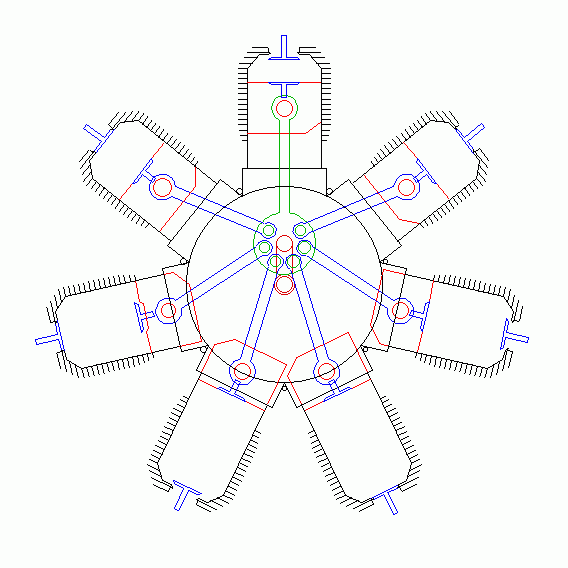 | |||||||||||||
| The Gnome was unique in that the intake valves were located within the pistons. Otherwise, this engine used the familiar Otto four stroke cycle. At any given point, each of the cylinders is in a different phase of the cycle. In the following discussion, follow the master cylinder with the green connecting rod. | |||||||||||||
| During this portion of the stroke, a vacuum forms in the cylinder, forcing the intake valve open and drawing the fuel-air mixture in from the crankcase. | 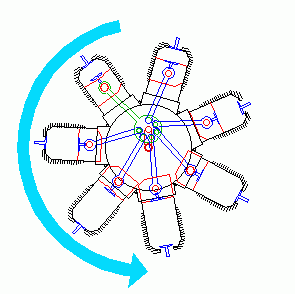 | ||||||||||||
| The mixture is compressed during this phase. The spark plug fires toward the end of the compression stroke, slightly before top dead center. | 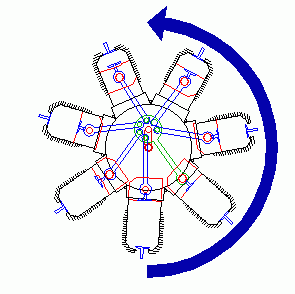 | ||||||||||||
| The power stroke happens here. Note that the exhaust valve opens early -- well before bottom dead center. | 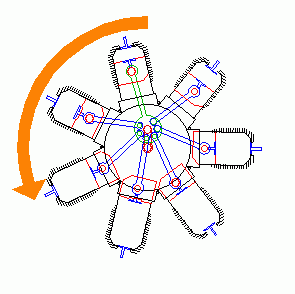 | ||||||||||||
|
This engine has a fairly long exhaust stroke. In order to improve power or efficiency, engine valve timing often varies from what one might expect. |
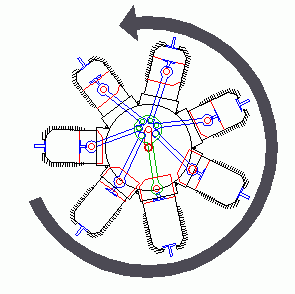 | ||||||||||||
|
When I first learned how these engines worked, I thought the only person crazier than the engine designer was the one who paid money for it. At first glance it seems ridiculously backwards. Nonetheless, a number of engines were designed this way, including the Gnome, Gnome Monosoupape, LeRhone, Clerget, and Bentley to name a few. It turns out there were some good reasons for the configuration: | |||||||||||||
| |||||||||||||
|
Most of my information on the Gnome came out of Air board Technical Notes7 | |||||||||||||
| Home Engines Bibliography
Copyright 2001, Matt Keveney. All rights reserved. | |||||||||||||